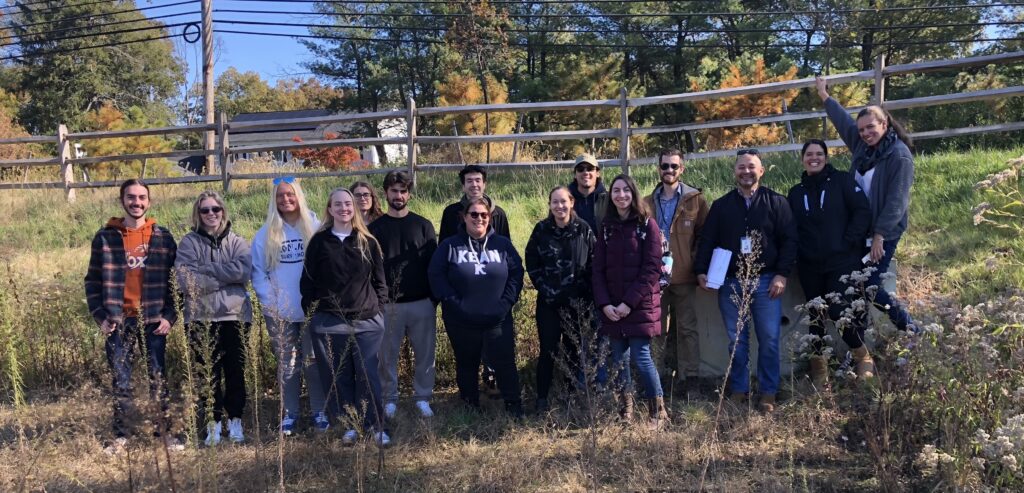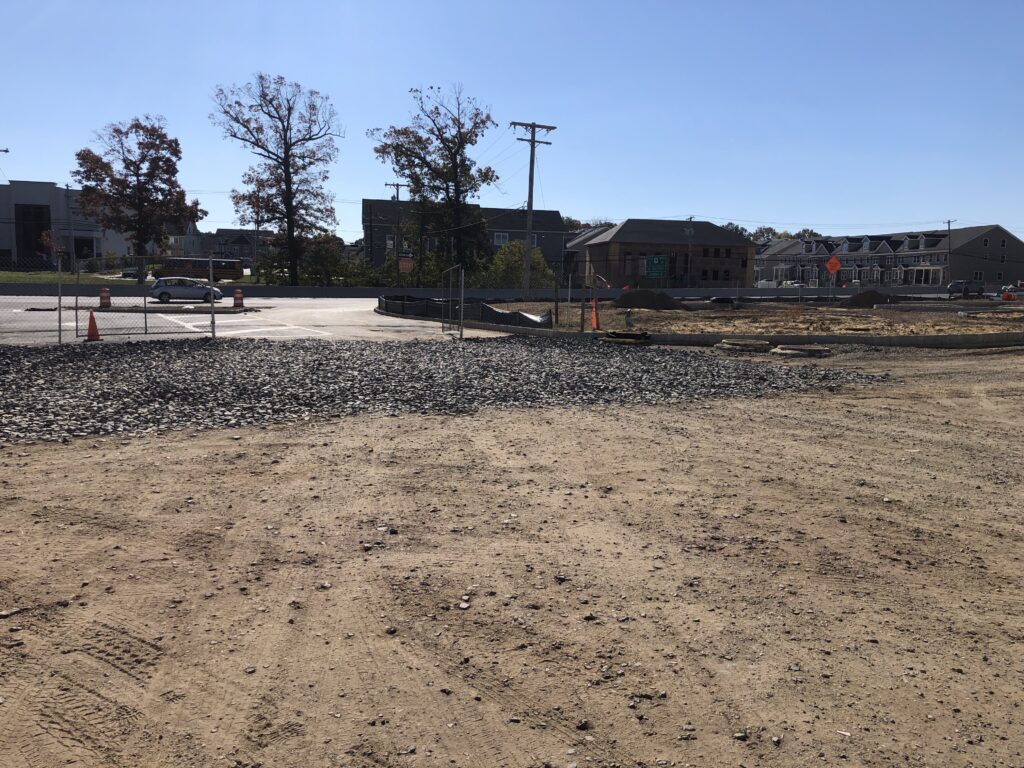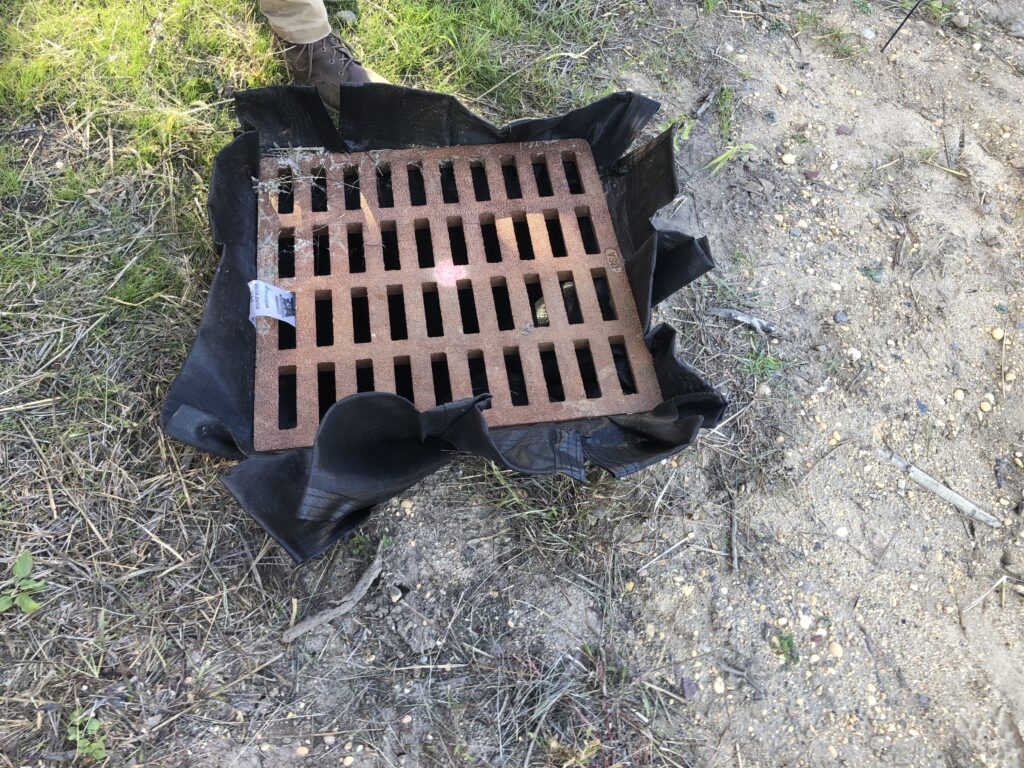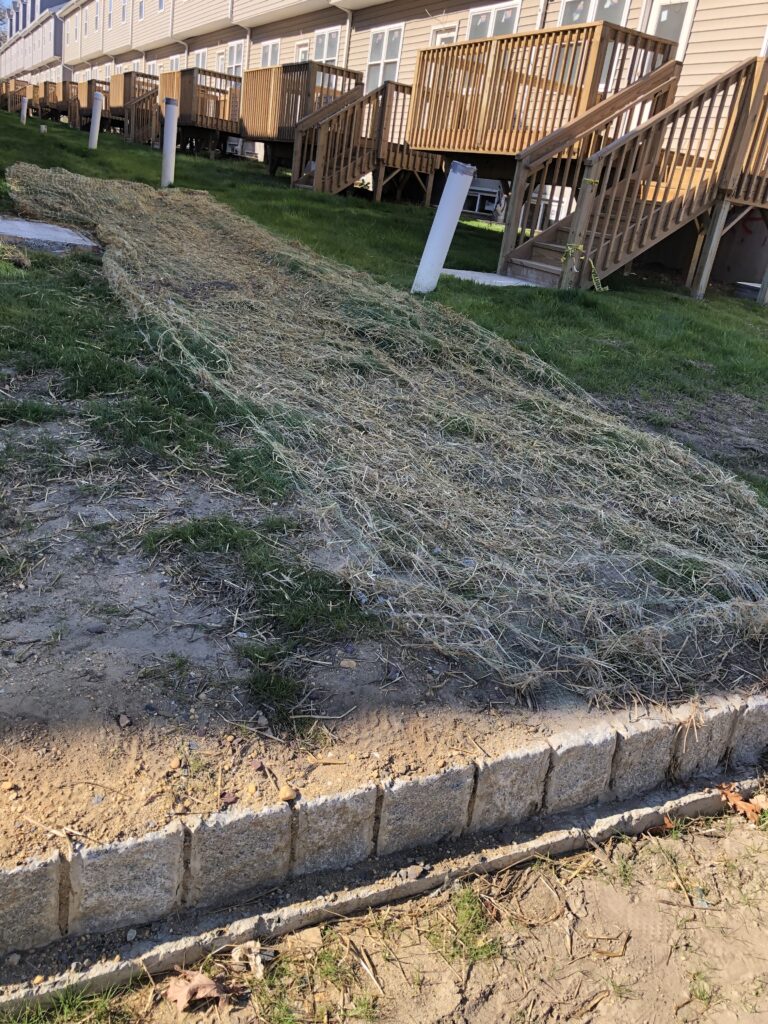
Senior Erosion Control Specialist, Ramon Mejia, and Inspector 1, Ben Hayden, of Ocean County Soil Conservation District, shared their knowledge and expertise with students enrolled in Kean University’s Principles of Environmental Soil Science, taught by Professor Becky Laboy at the Kean-Ocean campus, in Toms River, NJ. On a field trip to several local construction sites in Ocean County, Mr. Mejia and Mr. Hayden taught the students about the New Jersey Soil Erosion and Sediment Control Standards. Students were able to see firsthand how several of the 32 Vegetative and Engineering Standards are installed and operate to ensure effective management of soil and water resources during construction.
Stabilized Construction Access

The stabilized construction access standard reduces the trafficking or flow of sediment, oils, greases and diesel fuels onto paved roads or other impervious surfaces. This prevents pollutants from migrating into offsite drainage systems where they may enter directly into a waterway. By preventing or minimizing the tracking of sediments and other pollutants onto paved areas, significant reduction in construction related hydrocarbon pollution will also be controlled.
Storm Sewer Inlet Protection

The storm sewer inlet protection standard benefits local water quality. A temporary barrier and settling facility is installed in a storm sewer inlet. It intercepts and retains sediment, preventing its entrance into the storm sewer system. Other debris such as vegetative matter and litter are also prevented from entering the storm sewer system. The barrier is removed when the area draining toward the inlet has been stabilized.
Temporary Vegetative Cover for Soil Stabilization

The temporary vegetative cover for soil stabilization standard prevents offsite environmental damage. Establishment of temporary vegetative cover for soil stabilization is required on soils exposed for periods of 2 – 6 months which are not being graded, not under active construction, or not scheduled for permanent seeding within 60 days. These soils have the potential for causing offsite environmental damage when eroded by wind and rain. The temporary vegetative cover slows the overland movement of stormwater runoff, increases infiltration and retains soil and nutrients on site, protecting streams or other stormwater conveyances. The temporary vegetative cover reduces damage to the soil and to the environment until permanent stabilization is accomplished.
The temporary vegetative cover is installed by creating a seedbed, selecting an appropriate grass species, broadcasting the seed onto the soil, covering the seed with mulch, and anchoring the mulch. (Shown in the photo is straw mulch covered with netting.)
Field trips like this one provide students with opportunities to learn from professionals, gain real-life hands-on experiences, and introduce students to possible career choices for the future. The Ocean County Soil Conservation District welcomes collaborations and partnerships with the community for the purpose of education and conservation of our soil and water resources.
